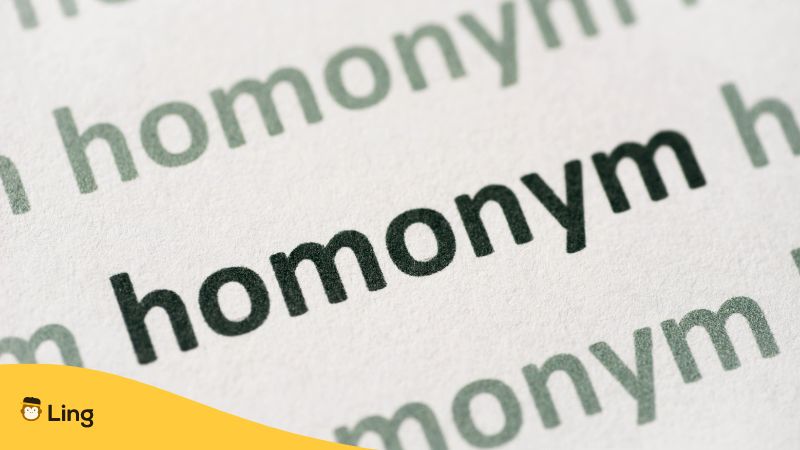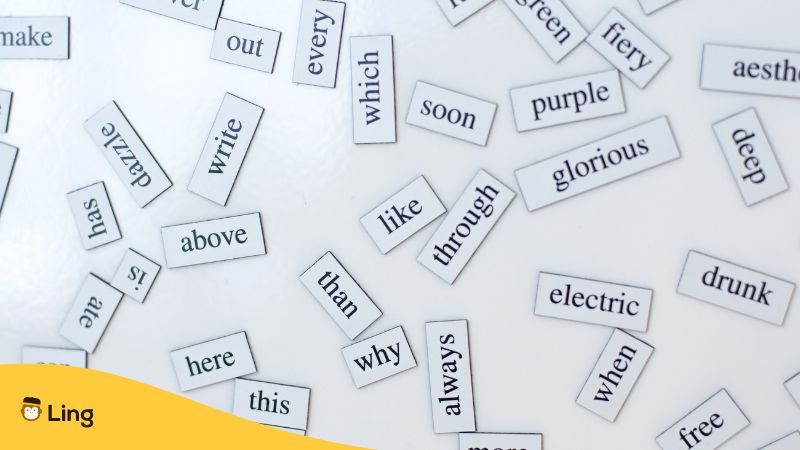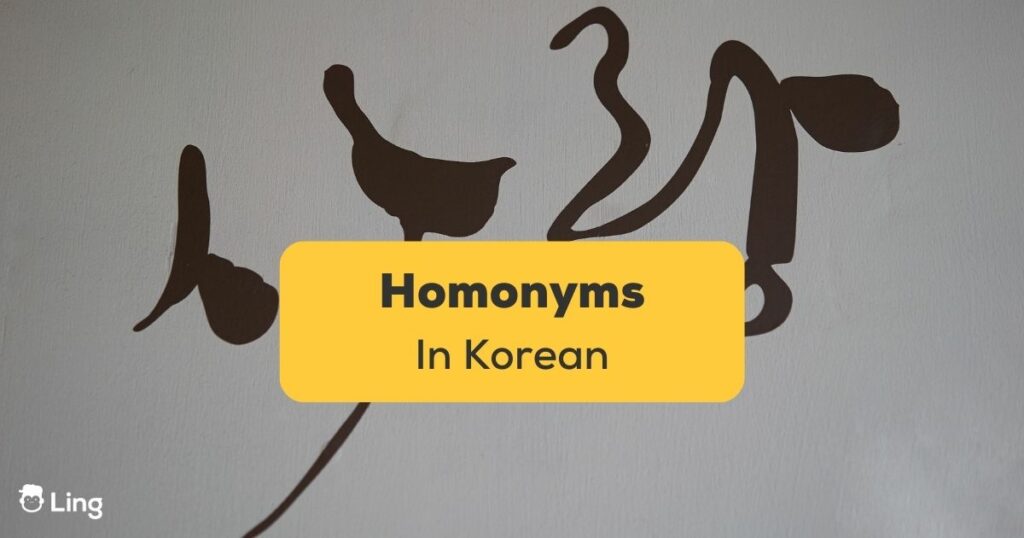Confused about Korean homonyms? Don’t worry, you’re not alone! This blog post will introduce you to 8+ common Korean homonyms that are sure to have you scratching your head. Whether you’re new to the language or just looking for a refresher, this guide will provide you with a better understanding of these tricky words. So get ready to learn about some of the most perplexing words in the Korean language!
New to learning Korean? I know what you’re thinking. Homonyms are indeed difficult in Korean because this Asian language has a relatively small number of distinct sounds (phonemes) compared to many other languages, which results in many words having the same or similar sounds. So don’t worry if you’re having a hard time with this for now. It’s totally normal, and it all just depends on your commitment to memorizing the differences. Let’s get to know the basic ones that you need to master.
Korean Homonyms
나무 (Tree)
One of the most common Korean homonyms is ‘나무’ (namu), which means both ‘tree’ and ‘wood.’ It can be confusing because the two words have similar pronunciations and the same spelling.
If you want to say that you planted a tree, you would say “나무 의 현앙도” (“namu ui hyeon-angdo”) meaning I planted a tree. If you want to say that you bought a piece of wood, you would say “세이 나무 의 달별” (sei namu ui dalbyeol), meaning I bought a piece of wood.
사과 (Sagua)
This Korean homonym has two meanings: the fruit and the sound a duck makes. While 사과 (sagua) means apple, it also means quack. You may joke around using this word if you indirectly want to tease your friend.

배 (Bae)
배 (Bae) is one of the most commonly used Korean homonyms. It can mean a literal boat that is used to traverse bodies of water. Besides using it as a boat, you can also refer to the feeling of being proud by saying 배 (Bae). For example, you might say, “나의 가족들이 내게 주는 보트같은 따뜻함” (naui gajogdeul-i naege juneun boteugat-eun ttatteusham) meaning My family gives me warmth like a boat.
You may also hear the expression “자유로운 보트” (jayuloun boteu), meaning a free boat which can imply that the thing you are talking about is free and independent, like a boat in the water.
가장 (Gajang)
This Korean homonym is used to describe something that is in the highest degree of comparison. It can be used in many different contexts to express the idea that something is the absolute best.
For example, if you want to say, “I like this one the most,” you can say, “이것이 가장 좋아” (igeos-i gajang joh-a). This homonym is also commonly used to compare two things or people, such as “그는 우리 중 가장 예의바르다” (geuneun uli jung gajang yeuibaleuda) which means “He is the most polite of us.”
Lastly, this homonym can be used to express an opinion, such as “가장 맛있는 음식은 뭐예요?” (gajang mas-issneun eumsig-eun mwoyeyo?) which means “What is the most delicious food?”.
새 (Sae)
The Korean word “새” (sae) is one of the most common homonyms and is used to refer to both birds and tea. If you listen to it first, you’d think to yourself, “Wow! That’s quite simple”. But that’s not the case, as the complex usage of this word confuses the masses.
To differentiate between the two, Koreans often use the words 새 (sae), meaning bird, and 차 (cha), meaning tea, to clarify what they are talking about.
But guess what? That’s not all. The homonym “새” can also mean “inside,” depending on the context it is used in. This is why as a Korean language learner, you always need to pay due attention to the context of the usage of a certain word.
잎 (Ip)
The Korean word for leaf is 잎 (ip). It’s a homonym that can mean “to understand” or “reason.” Korean literature and folk tales have countless incidents in which 잎 (ip) gives dual meanings, where it is often used to symbolize understanding or wisdom.
In nature, 잎 is used to represent the beauty and fragility of life. The traditional Korean costume, hanbok, even has an embroidered pattern of maple leaves called pyeongsanmu, which symbolizes autumn and the changing of the seasons.
잠 (Jam)
The Korean word for “sleep” is “잠” (jam). This homonym has multiple meanings and uses in Korean. It can mean falling asleep or taking a rest, and it can also refer to a nap or even an extended break.
You can also use it to say “I’m going to sleep,” or more formally in phrases like “감사합니다, 잘 쉴께요” (gamsahabnida, jal swilkkeyo) meaning thank you, I’m going to take a rest.
The word is often found in everyday language and is an important part of understanding the Korean language.
날 (Nar)
날 is one of the most commonly used words in Korean. It can refer to a 24-hour period of time, the daytime, or even an event. Its most straightforward usage is to describe the length of a day. It may also be utilized to convey “what are you doing today,”
In addition, 날 can be used to describe a particular recurring event, such as “such as “every Tuesday” or “every second Saturday” This phrase is frequently used in Korea to designate particular occasions and actions, such as family reunions and religious services.
날 can also be used to express something that is short-lived or fleeting, such as “a day of love.” It can be used to describe a momentous event or celebration, as well as a difficult situation that has passed.
Lastly, 날 can be used to describe the weather. Koreans often talk about the weather in terms of how many days of sunshine, rain, or clouds they have had. This can be used to express how much good or bad weather they’ve been having lately.
In conclusion, 날 is a versatile word that can be used to refer to multiple different things. Whether it’s the duration of a day, a regular event, or the weather, this word can be used in various contexts.
Useful Vocab

| English | Korean | Romanization |
| Apology / Apple | 사과 | Sagwa |
| Campaign / To Exercise | 운동 | Undong |
| Car / Tea | 차 | Cha |
| Counter / Dog | 개 | Gae – |
| Countryside / Fat | 지방 | Jibang |
| Doctor / Intent / Intention | 의사 | Uisa |
| Eye / Snow | 눈 | Nun |
| Feces / Serving | 인분 | Inbun |
| Fever / Native Ten | 열 | Yeol |
| Fortune Telling / Mole | 점 | Jeom |
| Grass/ Glue / | 풀 | Pul |
| Horse / Word / Speech / Talk / | 말 | Mal |
| Native Year / Native Sun | 해 | Hae |
| Pear/ Stomach / Boat | 배 | Bae |
| Real Number / Mistake, Error | 실수 | Silsu |
| Sino-Korean Eight / Arm | 팔 | Pal |
| Sino-Korean One / Day | 일 | Il |
| Smoking / Acting / | 연기 | Yeongi |
| Space / Seat | 자리 | Jali |
| Steam / Seaweed | 김 | Gim |
| Stock / Present | 선물 | Seonmul |
| Strange/ A Disorder / Weird | 이상 | Isang |
| To Be Addicted To/ To Fall Out | 빠지다 | Ppajida |
| To Be Hit / To Be Right | 맞다 | Majda |
| To Burn / To Ride | 타다 | Tada |
| To Wrap / To Be Cheap | 싸다 | Ssada |
| To Write / To Wear / To Use / To Be Bitter | 쓰다 | Sseuda |
| Work/ Rectum / Workplace | 직장 | Jigjang |
Wrapping Up

We hope that you aren’t confused about Korean homonyms anymore. If there are more doubts in your mind about Korean grammar, then check out Ling, which is a language learning platform teaching 60+ languages. Sounds cool, right? That’s not all. It has gamified learning to make the learners learn more in less time. No, we aren’t talking about hours, just 10-15 minutes a day, and you are good to go.
So download Ling from Google Playstore or App Store to start learning Korean like a pro!





















